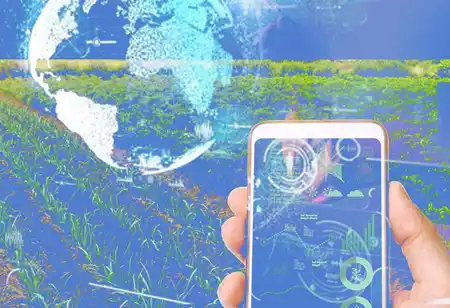THANK YOU FOR SUBSCRIBING
Be first to read the latest tech news, Industry Leader's Insights, and CIO interviews of medium and large enterprises exclusively from Food and Beverage Tech Review
How to Leverage Drone Imaging Power for Precision Viticulture?
Others have looked into sensor-equipped containers that may be remotely aimed to cool down in the event that a grape batch begins to ferment too hot

By
Food and Beverages Tech Review | Friday, December 01, 2023
Stay ahead of the industry with exclusive feature stories on the top companies, expert insights and the latest news delivered straight to your inbox. Subscribe today.
Drones, when utilized in the vineyard, can detect the moisture in the crop. These drones have multispectral sensors installed, which allow them to identify water by analyzing the hues of the surrounding plants.
Fremont, CA: To make their decent wines exceptional, winemakers have historically trusted their instincts. However, farmers and vineyard owners are now using technology in their pursuit of pure genius—particularly drone technology.
That is not to argue that prior to the development of drones, wineries were not experimenting with technology. The most advanced winery in Spain is Bodegas Ayuso, which has integrated self-emptying and self-cleaning tanks in addition to automatic grape analysis and classification. Others have looked into sensor-equipped containers that may be remotely aimed to cool down in the event that a grape batch begins to ferment too hot.
However, all of that is essentially related to the wine's primary manufacture and storage. Meanwhile, drones get involved in everything that needs to be done prior to and following the cabernet, chardonnay, or merlot grapes being put into the tanks.
Using Drones for Winemaking: Imaging Power for Precision Viticulture
Drones in winemaking have led to the scope of precision viticulture by detecting:
Water Stress Levels:
Drones, when utilized in the vineyard, can detect the moisture in the crop. These drones have multispectral sensors installed, which allow them to identify water by analyzing the hues of the surrounding plants. This can prevent crops from being damaged in drought-prone areas. One such example is California-based Jackson family wines.
Disease Detection:
The information from the normalized difference vegetation index (NDVI) can also be used to identify plant diseases, such as the dreaded leaf roll, which can cause significant reductions in fruit quality, pigmentation, vine vigor, and yield by delaying fruit maturity. Meanwhile, drones are being used by European businesses to identify flavescence dorée, a condition that turns leaves yellow and shrivels grapes.
Vineyard Management:
In essence, farmers can find sections of a vineyard with excessive vigor and weak spots by using drone data. This kind of information may significantly impact the management of the vineyard. In the event of a notable vulnerable area, for instance, the wine master may elect to harvest the area last or at a different period. Likewise, distinct blocks within the vineyard might be picked concurrently to produce more uniform wines by connecting the NDVI color classifications to the sugar and maturity of the grapes.
These are some of the significant applications of drone technology in winemaking. Farmers are using drones for security, surveillance, and even to scare away pigeons, who are estimated to cause crop damages worth 80 million dollars in Washington State alone. Farm owners can also use drones to survey the contours of their land for drainage.
In any event, it's reasonable to conclude that drones are assisting vineyards in improving both their financial performance and the “pleasure drink.”
I agree We use cookies on this website to enhance your user experience. By clicking any link on this page you are giving your consent for us to set cookies. More info







